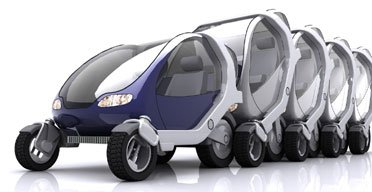XO Korea/XO city: Difference between revisions
No edit summary |
No edit summary |
||
| Line 14: | Line 14: | ||
''XO City'' assumes to have 100,000+ population, producing most of goods and services it needs. |
''XO City'' assumes to have 100,000+ population, producing most of goods and services it needs. |
||
==Energy== |
==Energy== |
||
The motto of XO city is XO like city from all aspects. As the energy efficiency of savings of XO is 10 times better than most of current laptops, ''XO City'' also should be the same; it should have 10 times better energy circulation mechanism. How? from the three aspects below; |
|||
*eliminating unnecessary energy consumption. Then, which are those unnecessary? |
|||
*# if there is a more energy-efficient alternative to do the same work (process or service) |
|||
*# if there is a more energy-efficient physical rearrangement of buildings and roads to achieve the same value production |
|||
*# if there is a more energy-efficient social value production system |
|||
The three options above are incremental rather than exclusive. |
|||
For example, if, for the purpose of citizens' going to and coming back from offices or fields everyday, XO City adopt MIT's stackable concept cars using electricity instead of ordinary gas-driven autos, the total energy consumption of transportation system using cars of our ''XO City'' will be at least 3 times lower or three times energy efficient. |
|||
Then, there also is the second alternative left. |
|||
Why citizens should use cars to go to & come from offices everyday? Why students should go to school everyday? By restructuring or designing the arrangement of buildings, housings, offices, factories, and schools etc., we can secure additonal energy savings...saying now we have reached 7~8 times better energy efficiency. |
|||
Now, the most important solution left; the restructuring of social system; exactly speaking, '''Social System for Value Production'''. |
|||
By substituting the total ''Intangible'' social infrasturcture (such as governments, banks, schools, health cares, insurances, broadcasting, journals, publications, and even business processes) with web-based services in the form of '''XO Activities''' |
|||
The main focus of XO Korea is that; transforming current social infras into XO Activities. |
|||
==Road== |
==Road== |
||
==Logistics |
==Logistics== |
||
==Transportation |
==Transportation== |
||
==Housing |
==Housing== |
||
==Water Supply== |
==Water Supply== |
||
| Line 47: | Line 65: | ||
==Business=== |
==Business=== |
||
===Agriculture & Fishery=== |
===Agriculture & Fishery=== |
||
===Manufacturing |
===Manufacturing=== |
||
===Service, Research & Development=== |
===Service, Research & Development=== |
||
Revision as of 00:44, 16 June 2007
환영합니다 | Portal | XO Korea | Deployment | Content | Hardware | Software | Mesh Network | Ethics | LOS | XO City | Accreditation | Consortium
 The content below is just a game idea, rather than a real project, and no relation with the OLPC Foundation. I also hope the content below to be used as an educational idea about the overview of city design, construction, and management for children;just like SimCity. Freely add your opinion on this page and discussion page also
The content below is just a game idea, rather than a real project, and no relation with the OLPC Foundation. I also hope the content below to be used as an educational idea about the overview of city design, construction, and management for children;just like SimCity. Freely add your opinion on this page and discussion page also
Introduction
From the aspects of economics, environment, and well-being of mankinds, being developed are quite a lot of revolutionary products such as stackable cars, XO mesh networks, and intelligent buildings etc. Also are revolutionary services and social infrastructures such as e-Government, e-Learning, e-Accreditation, and quite a few others.
But, how to deploy or adopt those revolutionary things into our lives? Can those stackable cars run onto our current highway systems? with giant trucks running side by side? Nonsense...
We need a new bottle to put those things in. That's the XO-like city we plan to construct.
City Design
XO City assumes to have 100,000+ population, producing most of goods and services it needs.
Energy
The motto of XO city is XO like city from all aspects. As the energy efficiency of savings of XO is 10 times better than most of current laptops, XO City also should be the same; it should have 10 times better energy circulation mechanism. How? from the three aspects below;
- eliminating unnecessary energy consumption. Then, which are those unnecessary?
- if there is a more energy-efficient alternative to do the same work (process or service)
- if there is a more energy-efficient physical rearrangement of buildings and roads to achieve the same value production
- if there is a more energy-efficient social value production system
The three options above are incremental rather than exclusive.
For example, if, for the purpose of citizens' going to and coming back from offices or fields everyday, XO City adopt MIT's stackable concept cars using electricity instead of ordinary gas-driven autos, the total energy consumption of transportation system using cars of our XO City will be at least 3 times lower or three times energy efficient.
Then, there also is the second alternative left.
Why citizens should use cars to go to & come from offices everyday? Why students should go to school everyday? By restructuring or designing the arrangement of buildings, housings, offices, factories, and schools etc., we can secure additonal energy savings...saying now we have reached 7~8 times better energy efficiency.
Now, the most important solution left; the restructuring of social system; exactly speaking, Social System for Value Production.
By substituting the total Intangible social infrasturcture (such as governments, banks, schools, health cares, insurances, broadcasting, journals, publications, and even business processes) with web-based services in the form of XO Activities
The main focus of XO Korea is that; transforming current social infras into XO Activities.